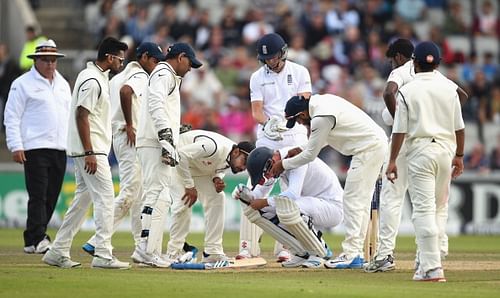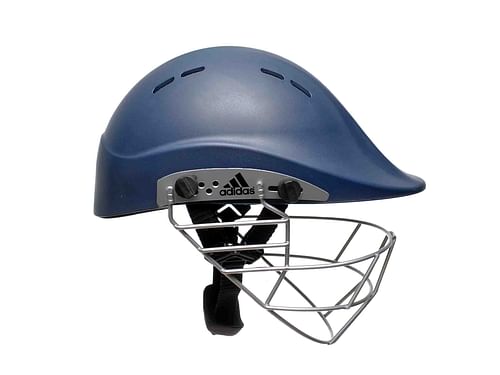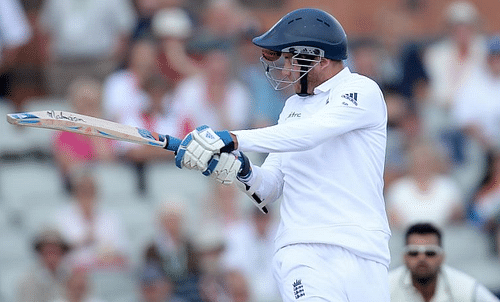
Was Stuart Broad's helmet responsible for his nasty injury?

Stuart Broad’s nasty injury, which led to him retiring hurt on Day 3 of the 4th Test in Manchester today has brought public’s attention to the safety levels of helmets used in the game today.
Broad wears the AdiPower PremierTek helmet made by Ayrtek Cricket, which stands out for its ‘unusual’ design.

What makes the Ayrtek helmet stand out
The Ayrtek helmets have made their name over the years for their Air Cushioning Impact System (A.C.I.S.) (know how it works) and odd shape. Kumar Sangakkara, Michael Carberry and Stuart Broad are some cricketers who have preferred the Ayrtek model over the more conventional one.
Apart from the revolutionary A.C.I.S., what makes the Ayrtek helmet safer, as the manufacturers claim, is the shape of the peak of the helmet, which is deflected.
What makes this deflection a safer bet for batsmen, is that it’s less likely to flex at the impact of a cricket ball, and allow it to go inside. The 90 degree peaks which are used in other helmets are prone to flexion when hit by high speed cricket balls, allowing the gap between the peak and grilles to grow wider and the ball to sneak through. Here’s how it’s supposed to work:
“Most head injuries suffered whilst batting are caused by the following factors: the ball being able to penetrate the gap between the faceguard and the helmet’s peak; the faceguard making contact with the head or face during ball impact; batters being struck on the relatively unprotected back of the head and the proximity of a helmet’s grille to the batter’s temple. The adipower cricket helmet range is specifically designed to reduce the likelihood of these occurring,” Tom Milson, the co-founder at Ayrtek, was quoted as saying last year about the technology.
“We identified that a 90-degree angle is going to cause flexion of the peak. That’s why the helmet is such an odd shape, we’ve gone for deflection. If the ball hits at a 45-degree angle it’s going to ramp it up and over,” he explained.
The Stuart Broad injury
In the first over after lunch today, Broad hit Varun Aaron for consecutive sixes off short deliveries which weren’t express pace.
The third however, was clocked at almost 140 kph and thudded into Broad’s helmet. With Broad’s face turned sideways, instead of taking the impact straight on, the ball sneaked through the side of the helmet, breaking a piece of the equipment on the impact, hit the elongated peak and ricocheted back onto his face.
Incredibly, it remained lodged inside the helmet, along with Broad’s bloodied features.

The ball sneaking in between the grille and helmet’s peak is one of the most common causes of injuries in cricket. In one of the more popular incidents, Brett Lee hit Brendon McCullum with a brute delivery in the Big Bash League T20:
With increasing cases of such injuries, ICC implemented stricter helmet safety regulations following a research on the injuries by ICC Medical Panel’s Dr. Craig Ranson, whose study on the topic titled “Batting head injury in professional cricket: a systematic video analysis of helmet safety characteristics” brought to notice the inadequecies of the equipments in use. (Read more about the it here)
Rahul Dravid, while commenting Cricinfo, mentioned how Broad’s helmet lacked that ‘extra grille’ which other modern helmets have. But with customised helmets available for cricketers, and depending on their ease of wear, along with different safety features, it’s more of a case of personal preferrence currently.
Probably a few more innovations in this field can save more nasty injuries in future.